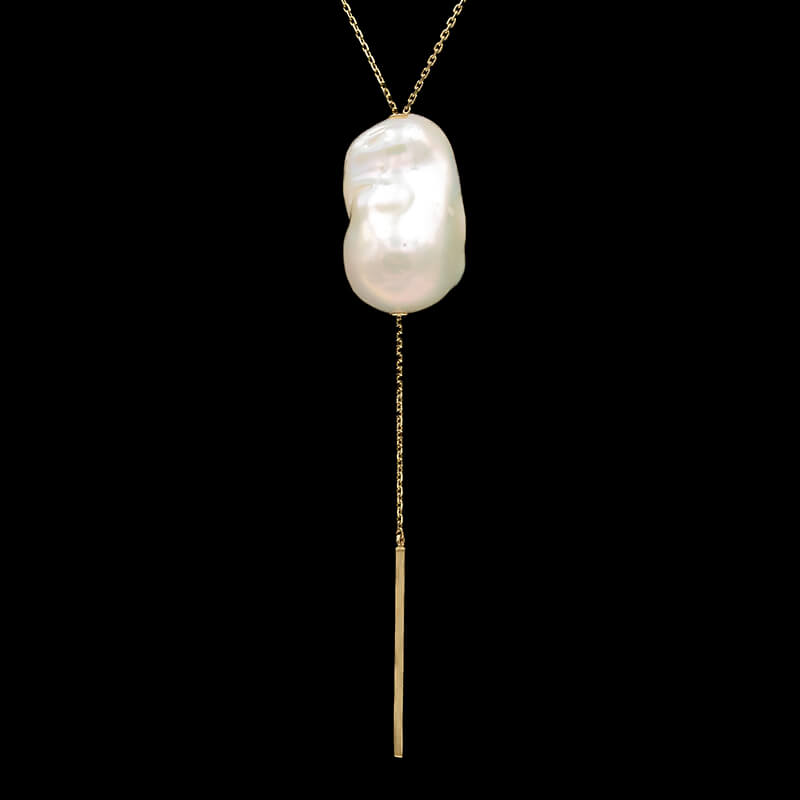The World of Pearl: Natural Treasures of the Sea
- Cara Nicolas

The luminous, ethereal glow of the pearl has captivated humanity for centuries. In fact, the earliest written mention of natural pearls was recorded by a Chinese historian in 2206 BC. Since then, these precious gems have adorned everything from the crowns of royalty to the necks of Hollywood stars to the subjects of famous paintings.
In addition to being one of the world’s most-loved (and longest-loved!) gems, pearls are the designated birthstone for the month of June. Read on to learn more about the fascinating world of pearl!
What Are Pearls?
While generally lumped in with other precious gems that are mined from the earth, pearls are actually hard, iridescent objects formed inside the soft tissue of a mollusk. They are largely composed of calcium carbonate.
When a tiny irritant, like a grain of sand, enters the shell of an oyster or mussel, it secretes layers of a called nacre to isolate it. Over time, these layers build up, resulting in a smooth, lustrous pearl. (Interesting fact: A pearl’s iridescence is the result of these overlapping layers, which break up light that falls on the surface.)
Natural Pearls vs. Cultured Pearls
When researching pearl jewelry, you might find pieces containing either “natural pearls” or “cultured pearls.”
What is the difference? Natural pearls form within of certain mollusks, usually around a microscopic irritant, and always without human help of any kind. This makes natural pearls extremely rare and expensive.
A cultured pearl, on the other hand, is grown with human intervention and care. Pearl farmers will very carefully insert a little bead made of shell into a mollusk, and tend to it for years until the pearl is ready to be harvested. Today, most of the mollusks used in the culturing process are raised specifically for that purpose.
Pearl Varieties
The word “pearl” usually conjures an mental image of the classic white variety that you might find in your grandmother’s jewelry box. However, within cultured pearls, there are several different types, each with its own unique characteristics:
- Akoya pearls: This variety of pearl is known for its classic white color and exceptional luster. Akoya pearls are traditionally produced in Japan and China.
- Freshwater pearls: Available in a wider range of colors and shapes than saltwater pearls, and often at a more affordable price point.
- South Sea pearls: These pearls are known for their large size and exceptionally thick nacre, resulting in a high luster and orient (play of color). Australia, Indonesia, and the Philippines are leading sources of this variety.
- Tahitian pearls: Also known as black pearls, these gems come in a variety of dark colors like gray, black or brown, with a shimmering iridescence and colorful overtones. They are cultivated primarily around the islands of French Polynesia
A Rainbow of Colors & Shapes
Due to their natural, organic origins, we can find pearls in a wide variety of colors AND shapes. While white, perfectly round pearls are commonly found in jewelry, you’ll also see pearls in shades of gray, pink, lavender, cream, blue, and even golden yellow.
As far as shapes go, it isn’t difficult to find classic round pearls—but don’t ignore some of the other shapes available! Drop or pear-shaped pearls make beautiful pendants and earrings, and the unique, organic shape of a baroque pearl is always eye-catching.
Caring for Your Pearls
Pearls are fairly delicate and require special care to maintain their luster. Here are our top tips for keeping your pearls in great condition:
- Wipe your pearls with a soft, damp cloth after wearing to remove any dirt or perspiration.
- Store your pearls away from other gems, preferably in a soft pouch or jewelry box lined with fabric, to avoid scratching. For strands of pearls, it’s best to store them flat instead of hanging.
- Avoid exposing your pearls to harsh chemicals or personal care products. The chemicals in perfumes, hairspray, body lotions, and common household cleaning products can dull or even dissolve pearls over time.
- Don’t wear your pearls while swimming or showering, as chlorine and salt water can damage them.
- If you have a strand of pearls that you wear regularly, it’s recommended to have them re-strung every year or two to avoid breakage.
A Timeless Treasure
Pearls have been treasured for centuries, and different cultures have associated them with various symbolic meanings. In ancient China, pearls were believed to symbolize purity, wisdom, and wealth. In many cultures, pearls are also associated with love, marriage, and felicity.
Today, pearls continue to be a popular choice for jewelry, offering a classic elegance that transcends passing fads and trends. Ready to add some shimmering iridescence to your look? Shop our collection of pearl jewelry now.






